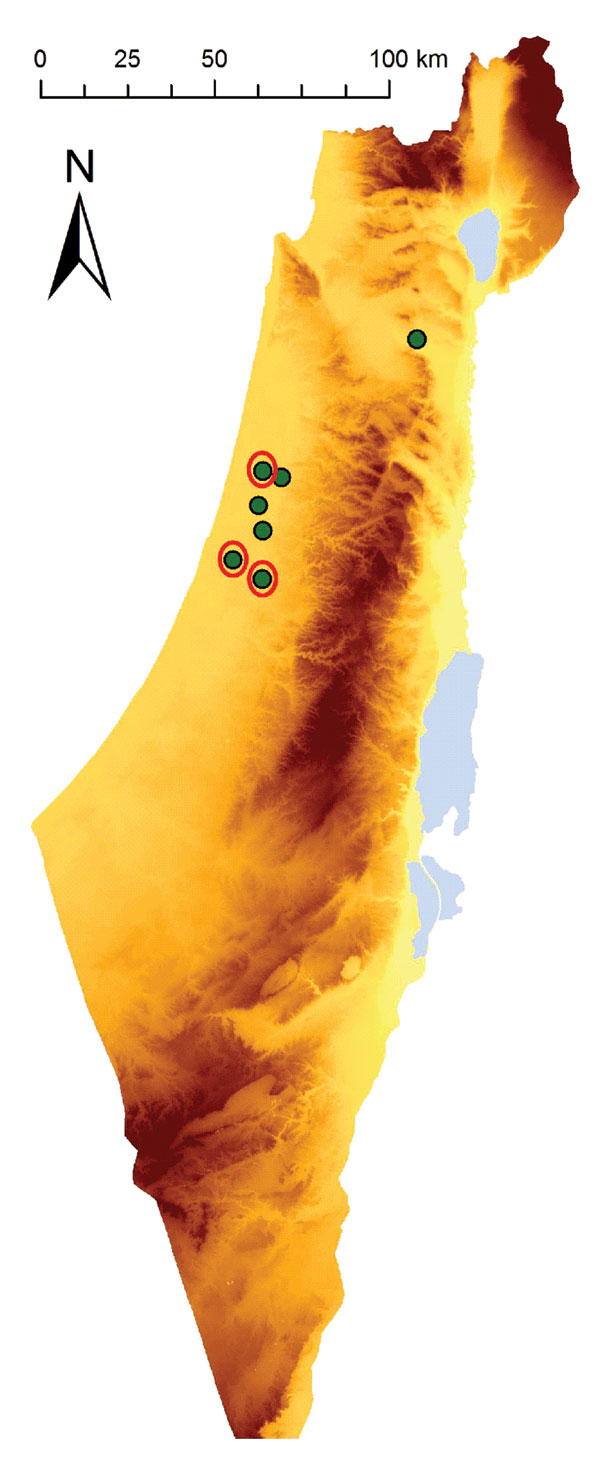Volume 17, Number 10—October 2011
Dispatch
Isolation and Phylogenetic Grouping of Equine Encephalosis Virus in Israel
Figure 1

Figure 1. Geographic location of farms in Israel with horses showing signs of equine encephalosis virus (EEV) infection. Eight horses with suspected EEV infection lived on 7 farms. Red circles indicate farms with EEV-positive cases.
Page created: September 26, 2011
Page updated: September 26, 2011
Page reviewed: September 26, 2011
The conclusions, findings, and opinions expressed by authors contributing to this journal do not necessarily reflect the official position of the U.S. Department of Health and Human Services, the Public Health Service, the Centers for Disease Control and Prevention, or the authors' affiliated institutions. Use of trade names is for identification only and does not imply endorsement by any of the groups named above.